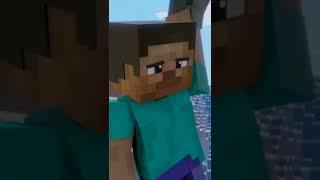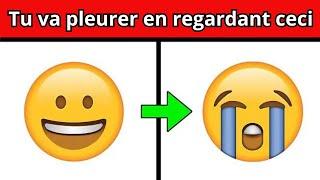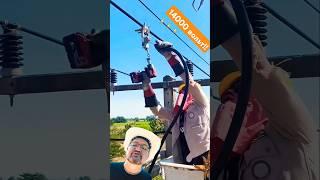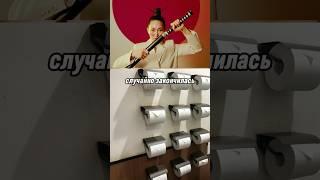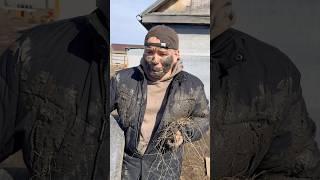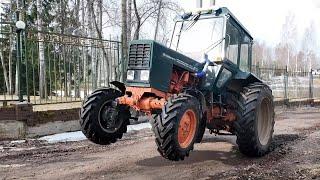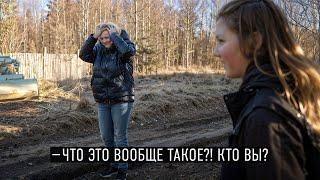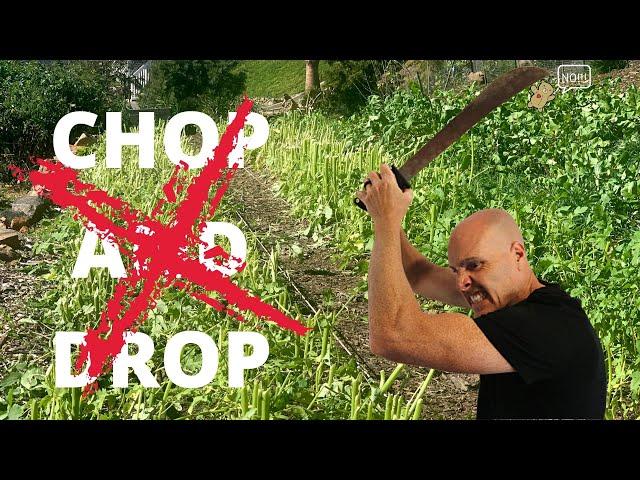
Why CHOP and DROP with cover crops is a WASTE OF TIME!
Комментарии:

What about the root mass? Does that count for something? I'm not sure if you're playing devil's advocate or didn't think this through. But yeah, things you say aren't nonsense. Anyway, this turned out to be a good brainstorming place. So, good job.
Ответить
The whole point of chop and drop is to create mulch, not compost or build soil quickly so slow is good! Eventually it will decompose. I then mulch even more on top of that. It saves me bringing in some of the materials I need for mulch. It also creates humidity when it breaks down. The carbon dioxide released also helps the plants. I compost more biomass from the edges of my yard to make compost. I then use that compost to put in holes I dig to plant. Weeds also are keyed to repair deficiencies in that particular area so it helps to have it chopped in place. Again. It's for mulch, not for major soil building. Mulch protects soil from drying out. Especially in a dry climate! Roots break down quickly in my beds! I have edibles growing between the chop and drop.
Ответить
This isnt long..45 minutes is long...The thing about chop in drop also includes the roots...actually the most important thing..the roots open up the soil in things like those HUGE radishes ..the top stuff may suppress some weeds..my concern would be the harmful insects it protects.
Id rather mulch it except that ties up nitrogen....
Mostly done because farmers killed their soil..literally.
Like in africa they came up with lure crops that they then can spray with major bug fungus killers they are unable to use on food crops...in a month the method spread world wide!! A MONTH!!

I’m new to garden and have been reading as much as possible on the subject. Thank you I will try both methods and decide what what works better
For us.

What if you put your compost into an old freezer on its side? The insulation would help retain heat. Do you think that would break down the skin of the compost quicker and more completely?
Ответить
It takes time for the chop and drop to dry completely. Gabe Brown I think calls it soil armor. Depends on the maturity of the greens, how much wood biomass in the stalks, lots of maybes and what ifs. Mulch is generally better than no mulch I guess.
Ответить
I think you mi@ed the most important part of chop and drop. It has nothing to do with what you see,but what you dont see. The roots in the ground. Thats where all the action is taking place with bacteria and fungi working 24/7. The bio mass above the ground is just an added benefit whether it is composted in place orvin a pile. Check out The Soil Food web by Dr Ingrahm
l

A flail mower and then solarizing with a silage tarp for two weeks does the trick. 🎉
Ответить
Sorry to be a bit late to the party here.. I think chop and drop works for extreme climates where the residue will either not dry out and be allowed to decompose and promote microbial life quickly, or where it will desiccate almost immediately and form armour on the soil to shield from direct sunlight, slow or reverse erosion by wind or water, until new growing plants give the microclimate for it to be used by microbes. My experience has also been that microbial stimulants are as effective as compost but with less back-ache.
Ответить
Maybe it's just me, but I feel like if you're not covering your chop and drop with compost, woodchip mulch, straw, something like that, then I don't get the point either. Plus, wouldn't a lot of the nitrogen off-gas? Interesting video. Has me thinking
Ответить
Small gardens should use something to break down the "chop n drop" with something like enzymes, bokashi ect. I call em carpet munchers lol
Ответить
Chop and drop works very well in my small garden. I guess I have a lot of help from soil critters like termites and therefore the soil is getting better much quicker. The termites have not been harmful to my plants as yet, so they are a great gardening companion so far.
Also, mostly I chop and drop grasses and plants of that nature, during the rainy season. I don't have lots of big trees yet, just planting fruit trees now.
I also compost in the winter, mostly when its dry. When the rains come I chop and drop. Doesn't really take much time, I let whatever grows grow, then cut it down, leave the roots intact mostly. More biomass is popping up in the yard each year, so I have a variety of plants to build my soil with. Plants are thriving - the few trees and vegetables. There are lots of earthworms around too, than before I did the chop and drop 2 years ago. Overall, soil health has improved, flavour of vegetables is deeper too, the juice of greens is thicker.
Also, initially I had issues with aphids and worms attacking the vegetables, now birds come around and clear these off. Win-win for me, the soil, the vegetables, the critters in the soil and the birds of the heavens.

Why not just leave it on tbe ground and throw compost on top?
Ответить
Thank you for the video. Here is East Tennessee I’m trying to implement more of a no till system. I’m having a hard time wrapping my head around exactly how to implement it. Chop and drop seems great if I’m going to be transplanting the next crop. But what if I want to plant something like winter rye and I have all that vegetable matter laying all over everything? Seems like it’s in the way. Also the “green material” turns into “brown material” if it lays on top and drys out. So composting it seems to be a great solution in this situation. I’m wanting to do some continuous cover cropping: Sudex then winter rye. How do you broadcast something like winter rye without tilling? Thank you again.
Ответить
I like your thought process when making videos. 😅 but you progress through the idea so slow and make some many disclaimers as to why you doing something.
Ответить
I am beginning a 1/4 acre "Back to Eden" food forest. Have 25 yards of wood chips that are decomposing over winter, and am going to spread them in spring. Our soil is barren sand because we live near the ocean.
I was thinking we would grow a lot of nitrogen fixing cover crops, chop and drop them cover that with another 8" layer of wood chips in the fall. Does this sound like a happy medium? Or maybe I should take all of the chopped greens and layer them in the huge wood chip pile?

I agree or disagree.
Ответить
Make sense. Reference to nature and questioning yourself - sounds like a good way of thinking
Ответить
You are right, just thin layer of green will not do much. I chop anything I don't need on my bed any more (grasses or done veggies) and leave it on the bed, then I put the layer of hay and then everything that grows above the hay i chop and drop if I don't need it. But the thick layer of hay is important for processes, I have a feeling.
Ответить
improving soil is in my opinion dependent on plant roots. Soil will improve on deeper and deeper plant roots. Whatever you can do to soil to improve and lengthen plant roots to extract deeper locked minerals via the mineral organisms and fungi that travel in and along roots is imo key. Transferring surface nutrients deep (via long roots)will create the deeper soil. Your hybrid idea is the way to go. Having an active root system 365 ie always having something *green" growing (whether it be a cover crop in winter or a vegetable crop in summer). Chop and drop leaves the previous root system in place which gives the new plant an easier pathway to set down roots as they follow decayed roots and beneficial micro bio already in place. Any surface applied compost is just a long-term feed for the bio-organisms to transfer to the plant. Note that commercial fertilizers kill and inhibit the bio-organisms and therefore sterilize soil. The soil has to start all over again. Also the mulch layer helps in keeping the soils surface below 130f which kills bio organisms. in short... plant 365 into a cover crop. either mulch the cover crop leaving the dead root system in place onto the seeds and or add a layer of "fully "decomposed compost to that seeding. Previous cover crop acts as a weed barrier. Compost covers the seeds and provides surface nutrients the new crop will use to lengthen its root system.
Ответить
On a potato bed, so long as the potato shoot are not mulched out from finding light, is a good way of composting in-situ and blocking out light to the new potatoes near the surface; otherwise I build an open compost heap to use the composted materials where I need it.
Ответить
Very well I Like your symbiosis on these biodiversity building blocks I will only add the that I measure success and growth community in mycelium layers and colonial expansion it allows community in soil communication of nutrients, bio organisms movement and water ,air ,mineral , cycles and in the flow then the plants of purpose that will be harvested from this living earth hopefully with minimal compacting thanks enjoying your videos
Ответить
In your scenario, both methods would seem to come out in a tie: either a thin layer of material spread over a larger area or a more concentrated amount in a smaller area. Chop and drop would allow decaying material to release its nutrients into the soil quicker initially but take longer to complete. On the other hand, composting would have to be completed before reapplying the more concentrated finished product, minus any nutrients leached out into the soil below the pile. Plus, it's a lot to assume one would be an expert at maintaining a compost pile from the beginning in order to maximize the completion rate. With either method, I don't think most people would have enough raw materials on hand intially to rapidly improve their soil, so bringing in finished compost to adequately cover all ones growing space would be the quickest route to soil improvement.
Ответить
I live in Phoenix and like all 3. I leave plant litter where it lands under trees and bushes. If I can get a chipped tree mulch drop I mulch few inches where needed for weeds, line paths, and root zones but absolutely make as much compost in a semi-shaded area. I'd love to have a year round ground cover/cover crops wherever I'm not growing veggies. I've never grown a cover crop being in Phoenix it seems the recommended nitrogen fixers won't do well. Would love to know what to use.
Ответить
I appreciate the effort but the comparison is not great. In the first place the companion benefit to shop and drop is that we've had something in the soil growing and photosynthesizing and feeding the soil that way plus we're leaving the roots in to disintegrate and feed the soil life. Agreed that's also true if we're taking the chop and putting into the compost pile, provided we have the room to make compost in our Gardens and many of us do not. S is the immediacy of the benefit and leaving it where it is both in terms of time and labor saved and in terms of keeping that material in contact with the soil rather than remotely dealing with it in a compost pile over a significant period of time. He notes that similar processes take place in both places with off-gassing and lots of material to the processes. But with chopping job I'm specifically not needing to mulch as much. Third is the significant reliance on logic rather than facts. Throughout the video he says many many times how he doesn't know this for sure but (a specific conjecture) makes sense. That kind of sucks the value out of the presentation. I get how difficult it would be to put together the data necessary to do a one-on-one comparison but that's kind of the format of this video. I admit I was drawn to this relatively short video rather than a scientific comparison in an hour and 50 minutes by Elaine Ingram. So maybe it's my fault for expecting more definitive results.
Ответить
Did something happen to diego? Is that why there is no more videos? Anyone know?
Ответить
I must admit when I put down comfrey it disappears. Blows away, or maybe the slugs eat it? You make some valid points. Thank you.
Ответить
Chop-drop is slower but will improve the dead hard clay (subsoil) not just adding nutrients to the top, but inviting worms to decompact the soil below as well as encouraging fungi. First native plants that can pull the nutrients from the poor clay, chop and drop, then grow beans chop and drop for winter. Jan-feb i add a bit of some purchased soil with composted manure and now i have about 18inches of han digable soil with an amazing texture. My just mulch areas are the slowest to improve, used as walkways, and usually stay hard packed even where i dont walk. As they are uphilll from the beds they slowly wash the broken down chips nutrients into them which is nice. Works well if youre improving no till areas for the future that you dont need for now, to chop and drop or if you dont have room to compost all that is growing. Id need three+ 3'x3' piles to handle my volume but i can easily spread it over the garden and its not taking up my super limited non bed space. Also compost added to poor soil will just sit on top and nutes will runoff. Essentially i look at it as open air vermicomposting in place that produces a different output than my compost. My winter hugel mounds also produce a 3rd type of compost/soil with an even finer and lighter texture. I wouldnt chop and drop light stuff either as ur right it will likely blow away, i use big stalks with leaves. Also unlike compost piles its thinner so doesnt get so gross like an unturned pile
Ответить
I drop part of it to become a mulch so the soil isn't bare (if needed), then compost the rest.
Ответить
Diego, I appreciate these videos a lot. They are both knowledgeable and fun.
Ответить
Get into syntropic farming..it'll change your idea about chop and drop
Ответить
In the desert of New Mexico, 99% of soil organic matter blew away or decomposed long ago. I mix mine both into the soil and then cover it with more. But I’m starting from bare adobe soil. I’m imitating the forest floor.
Ответить
I just cut my buckwheat today, knew I needed a compost bin. Thought why not heat the high tunnel with compost. This video then confirmed that I will rake up cover, till and gather a layer of clay into large compost pile or 2 (60’x8’). Then another cover crop to start 2nd compost and break up clay. Continue and build my soil. I already added a lot of good topsoil, leaves, goat barn hay n poo and an oak chip load. On top of clay…
Ответить
Keep up the good work. Thanks for enlightenment
Ответить
Using both here in zone 3 western Canada. With 100 growing days a year we juggle. We don't do cover crop for biomass really but to get more friable soil, with better water retention (we are a cold desert, very little precip), to aerate the clay. And we do composting also, but again with a small season getting good compost takes a lot of time. So we do both and trust our land and our instinct.
Our season is finished and I have sowed cover crops mid summer, they are good size now and will be killed very soon by the weather. We have also covered the soil on other beds with leaves, grass clippings, then a thin layer of compost and finally wood chips.
We'll see what happens in late spring when we can start working again in our garden (about 1000 sq ft). Our crops are abundant and of very good quality. We are a very sunny country and our aquifer is connected to a river so no shortage of water. Water is crucial to break down material quicker.

Over the years I've made truck loads of compost and vermicompost. But now as I approach 70 I look for easier ways to enrich my garden soil without turned heaps of compost. I think a thick mulch is an answer and chop 'n drop fits in that program. Also, like most home gardeners, I can't make enough compost to satisfy the nutrient needs of the entire garden so cover crops and chop 'n drop fill the void. Oh I'll likely continue to make compost, but moving forward mulching will play a huge role.
Ответить
Concentrating the biomass deep enough will retain the water better. Water is vital for all life activity. If the biomass is too thin it can not hold water and it will blow away. If your biomass is more concentrated, then it will retain more water and it will be less likely to blow away. I live in the desert. I am digging holes and filling it with biomass and water. It works. Somehow the bacteria and fungus co-mingle with the other holes, which helps to develop the surrounding dirt to become soil. With this method, I have been able to develop soil from sand, clay and salt. I stumbled upon your video a year or so ago. Because of you, I've been able to combine the work of Jeff Laughton and Elaine Ingham to make some great soil. I am attempting to create "Terra Preta" in the desert with 4" of rain a year.
Ответить
16.47 you hit the nail on the head. Use straw mulch. Yes roots in the ground are good but I've found this cover crop method has a negative impact on on production by secondary overgrowing the veg. I have also not found any beneficial soil decompaction through cover crop roots left in the ground even though is theory they should. Walk ways yes, you've transferred mulch production in site, and it's kept the walk ways soil covered, it help's especially if your string trim it quickly, you've gained an efficiency. On top of the veg beds? I've stopped this practice due to grow back and creating more work. You also cannot direct sow on a cover crop bed meaning you've lost that efficiency.
Ответить
16.55 bingo. you return on investment is minimal when you factor in down time. Use of compost speeds up production as its ready made and bacterially rich instant plant food. In my dry Australian climate where I usually cut hay elsewhere, onsite production was attractive in terms of efficiencies however the coverage was minimal and there was regrowth.. Cutting hay you can increase the coverage. The cover crop (Flail mowed) oxidizes quickly and didn't achieve any composting style humus building. Just ended up being more dry matter mulch. Along side tree rows yes, (side cast with mover) veg beds no.
Ответить
Your points are valid but, here we should be talking about the Quantum of material involved. Theoretically your pile of compost looks more, but from where does that matter come from. Obviously it has to be sourced from outside farm, which is again not feasible on a large scale, where simple Chop and Drop is good. Also pertinent to note that Chopping and Dropping weeds is better only a by-product to avoid harmful weedicides but to make best use of weeds as mulch which saves water unlike a remotely placed compost pile.
Ответить
I chop and drop for mulch
Ответить
In your home garden, if you have some lettuce and silver beet that has bolted, chop and drop of the crop residue by its self is not going to amount too much. If you covered it with grass clippings however, that will keep it moist and provide a good environment for soil life /worms to break it down.
Ответить
Its crazy how much cockroaches and pill bugs eat the compost. Not just the earthworms
Ответить
is there something to be said about the composition resulting from the composting method? Like, is hot bacterial really ideal all the time, or could there be a preference for fungal material (browns), for example? could the "natural" method really mean a more balanced composition? I believe over use of hot composts can create more long term deficiencies, where the more long term, natural method might provide a more balanced solution.
Ответить
You can't build soil in a small amount of time. Not through chop and crop. And not through composting. True, a compost heap turns biomass into compost much much quicker. But you need biomass for 5 to 20 times the area to actually put good compost on your plot of land, assuming just one year of biomass harvested. There is just no substitute for buying compost. The problem with removing all your above ground biomass is that it leaves the soil bare to the elements. You should either resow with something else immediately. Or have enough weeds grow by themselves. Otherwise, a lot of your soil life will die.
The chop and drop acts as a mulch. It doesn't generate compost. You already need to have that. You actually don't want your mulch to compost.
If you have huge plants that put out a lot of biomass, like sun flowers or sorghum sudan, then making a compost pile with them can be helpful. But you'd leave some to act as residue/mulch/ground cover.
Best is to bring in compost and bring in mulch, if it is needed in your climate. And you sow cover crops just after you harvest your produce. Cover crops are not to produce compost. They are there to keep the soil going.

I use chop and drop only and have no need to compost anywhere else since I would have to double move the bulky materials. It has taken me some time to get it right but I have great success doing so. When you layer it correctly brown green brown green you get the compost once it is done and in the in-between you get mulch and green manure which is the water you talked about. It leaches into the soil loaded with microbes because they live in the water/sap. The worms and beetles and such eat/poop and die in the material leaving it rich and weed less:]
Ответить
😂 grind charcoal and mix the powder to the biomass to secure carbon
Ответить
I use chop and drop when my compost is at capacity. Also, I chop and drop then cover the bed with a tarp. I also started to bury plants in places where I don't mind disturbing the soil, such as where I plant and harvest potatoes or if I'm "re-doing" a bed that has very poor soil.
Ответить
20 minutes is a long video...oh lord.
Ответить
I think for organic matter building, its no surprise that just adding compost is faster. I mean you rake biomass, compost a large amount, and mix into top of the soil. I think the purpose of Chop and Drop isnt just adding organic matter.
For example, I started cover cropping this year not to just build organic matter, but to have living roots in the ground to build up microbes. Most microbes require a living root to really mutiply and thrive. By having these cover crops grow, that is the living root. Since this helps the microbes, i also throw on slow release fertilizers. By the time these are broken down, my transplants will be ready and instead of a slow release just in the planting hole, they will have microbes AND nutrients available already and future nutrients.
Plus, cover crops give some mulch which feed all sorts of bacteria, fungi, bugs, all those goodies. The real important thing, imo, is to allow 2-3 weeks for the cover crop to decompose, eapecially the roots underground because we want those nutrients to be released rather than tied up when the plants go in. That's the plan lol










